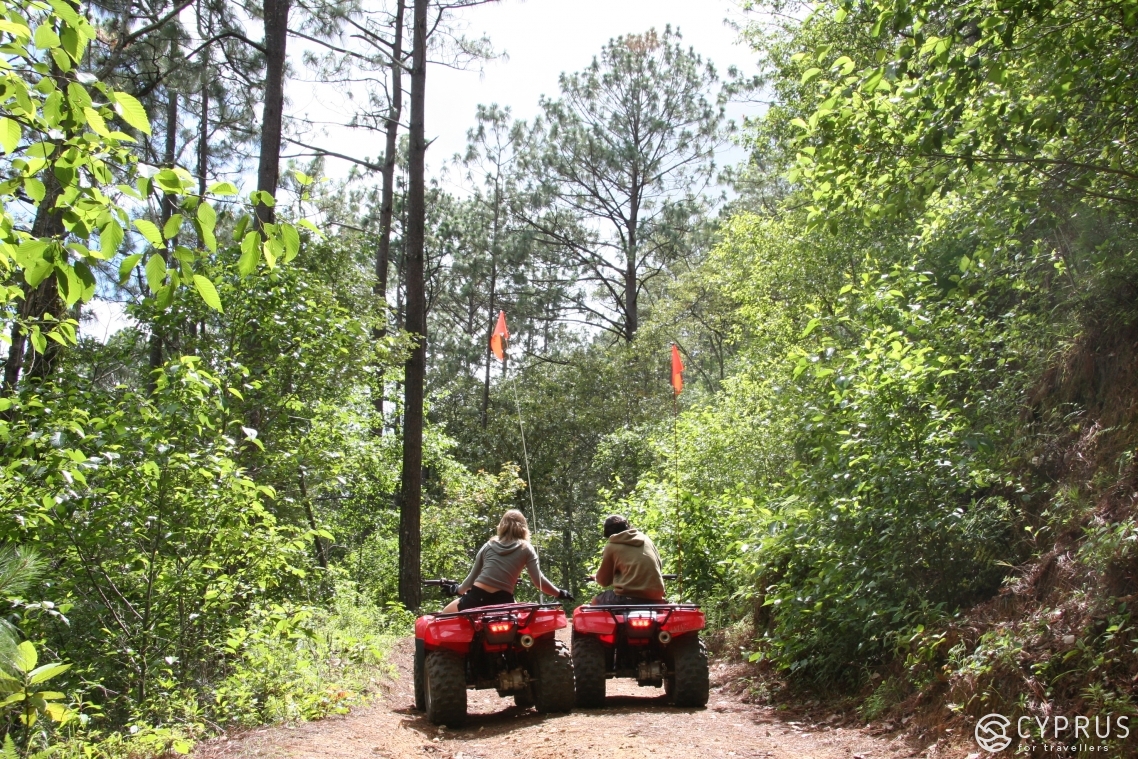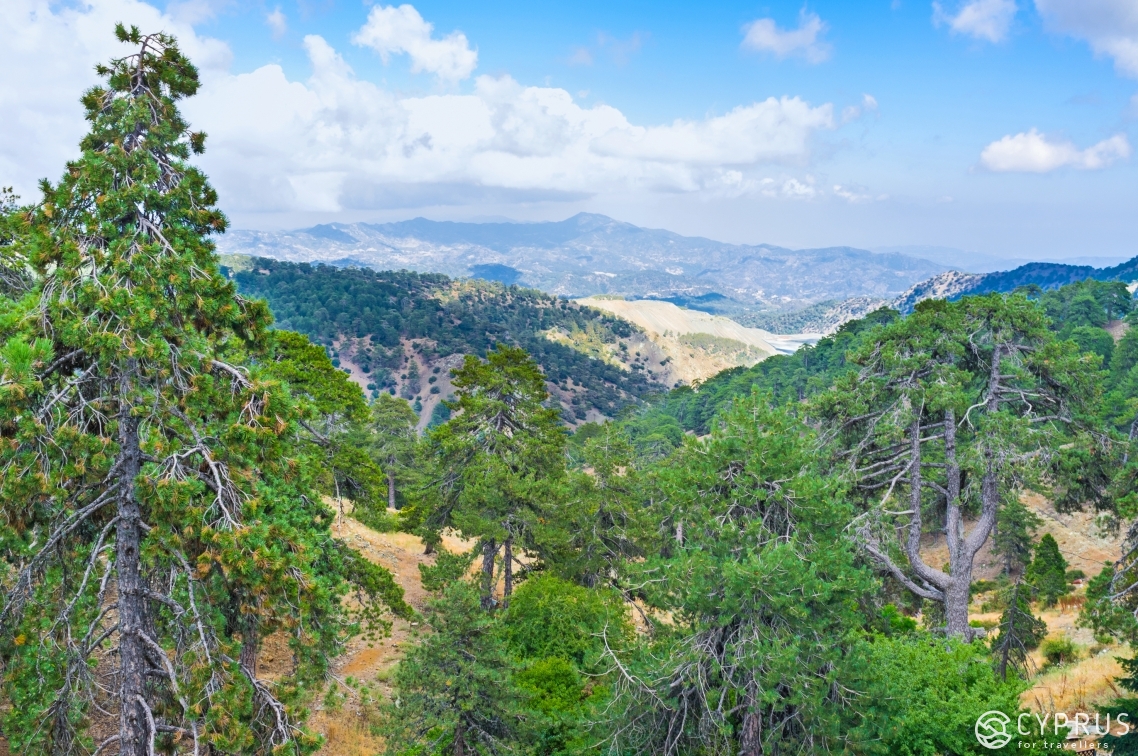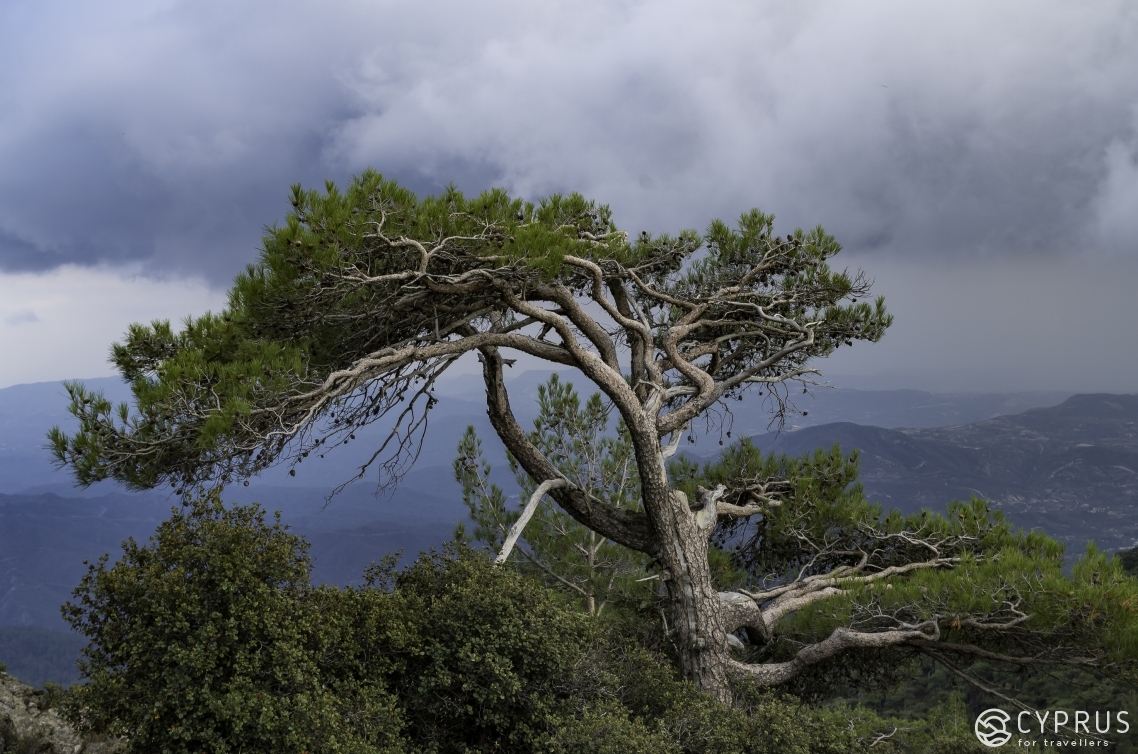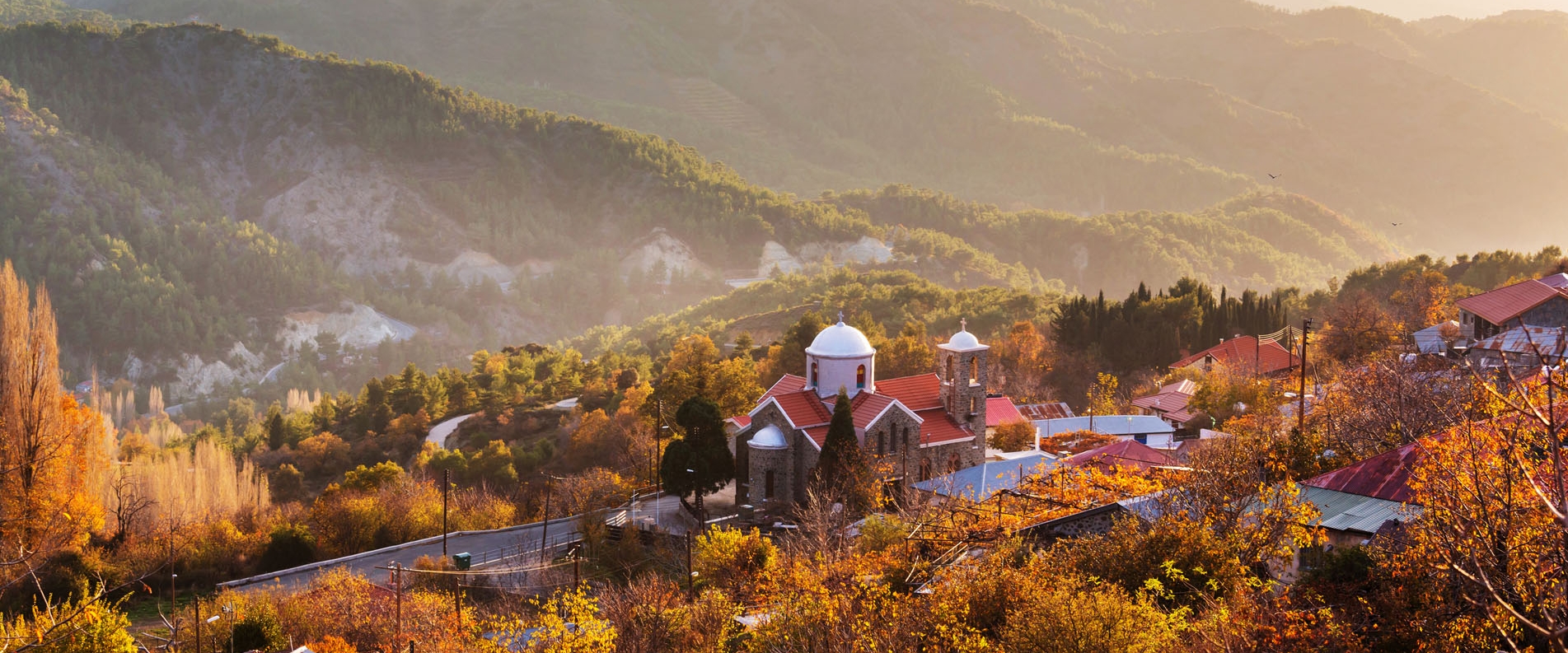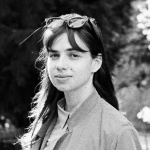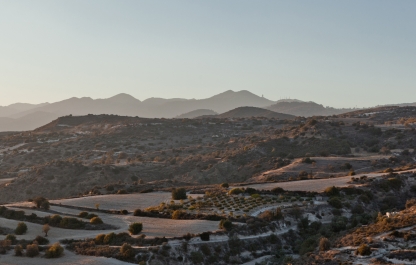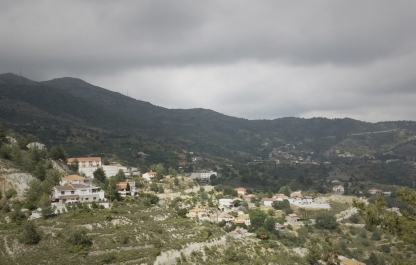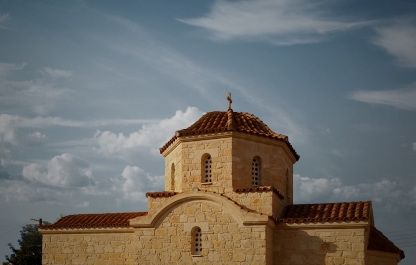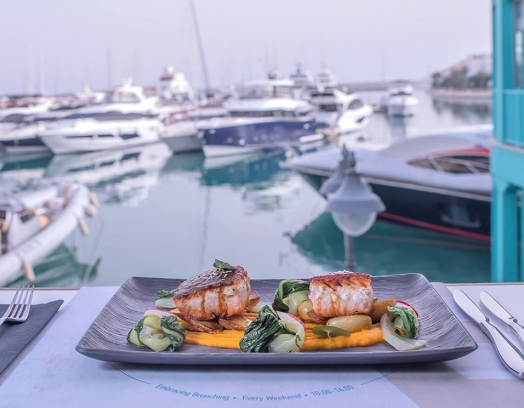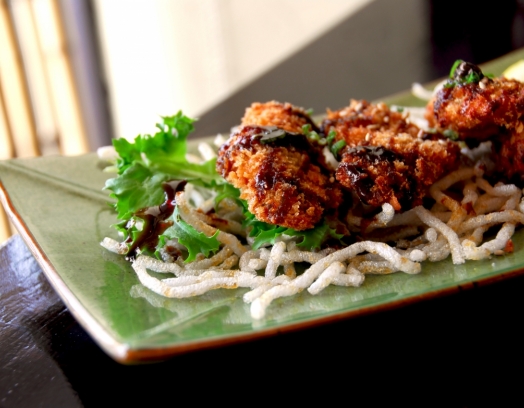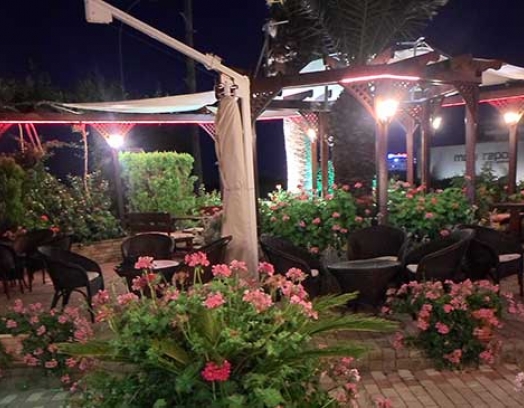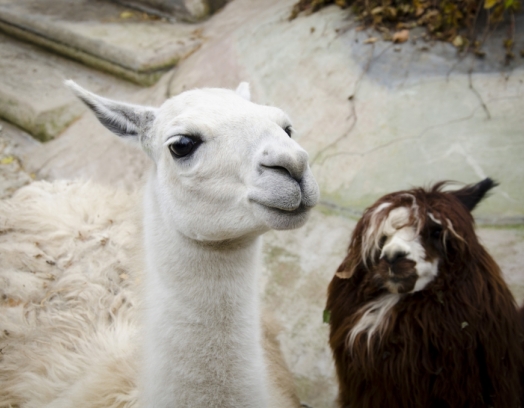Troodos mountain range located in Western Cyprus is the largest on the island, while the Olympus mountain, its highest peak, raises 1952 meters above the sea level. Troodos is well known for its beautiful resorts, traditional villages, and, to a great extent, for its cultural heritage: dozens of historical monasteries, churches, and castles are located here.
The mountain climate is different from the coastal: the shift of seasons here is more distinguished with dry and hot summer and freezing and snowy winter (the peak of Olympus is covered with snow all year round).
Magnificent Troodos forests are filled with hundreds of trees and plants, including pines, cypresses, cedar trees, strawberry trees, and giant cacti. These areas are home to various animals such as foxes, hares, and such a special and rare mountain sheep as moufflon (hunting moufflons in Cyprus is illegal). If you like watching birds, in Troodos you can see Bonelli eagles, ravens, and other rare species.
Troodos villages are a perfect place to learn about (or just experience!) Cyprus agriculture and folk crafts. For example, in Kalopanayiotis village locals fish-farm, in Prodromos — grow apples, in Pedoulas — cherries. Almost everybody in Omodos makes their own wine, unique wooden tubs are produced in Moutoullas, and Lefkara village is famous all over the world for the embroidery and silverware technique that is used there. Visit these and other Troodos villages to meet local craftsmen and buy their incredible work and enjoy incredibly picturesque views and interiors of traditional houses.
Some of the famous Cyprus old churches and monasteries, included in the UNESCO world heritage list, are also located in Troodos.
You can brighten your Troodos experience by hiking beautiful trails — or even take a quadricycle safari-tour!
Troodos villages
Mountain village Omodos is located 800 meters above the sea level in Troodos. Only 300 people live here. Their major occupation is wine-making (in Omodos, you can try local wine almost in every house). Also, make sure to stop by a traditional house museum and explore rare photographs and old village-style furniture, have a look at an original wine press, and try local bakery and unique sweets.
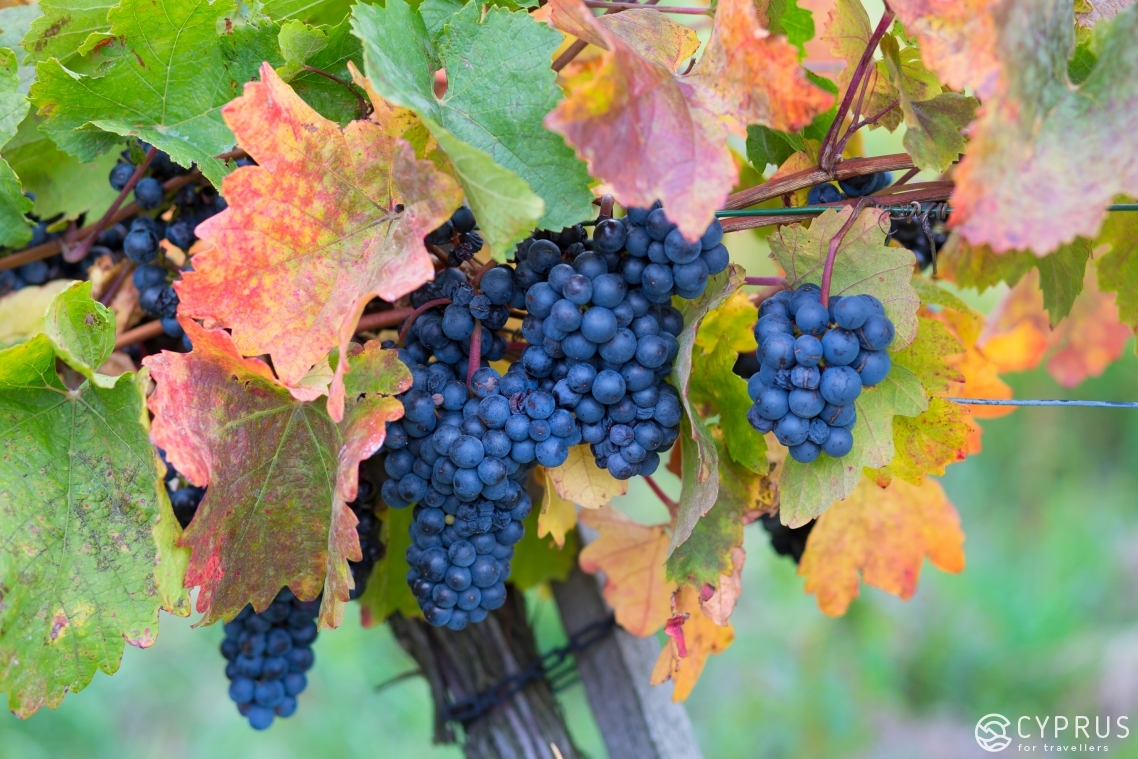
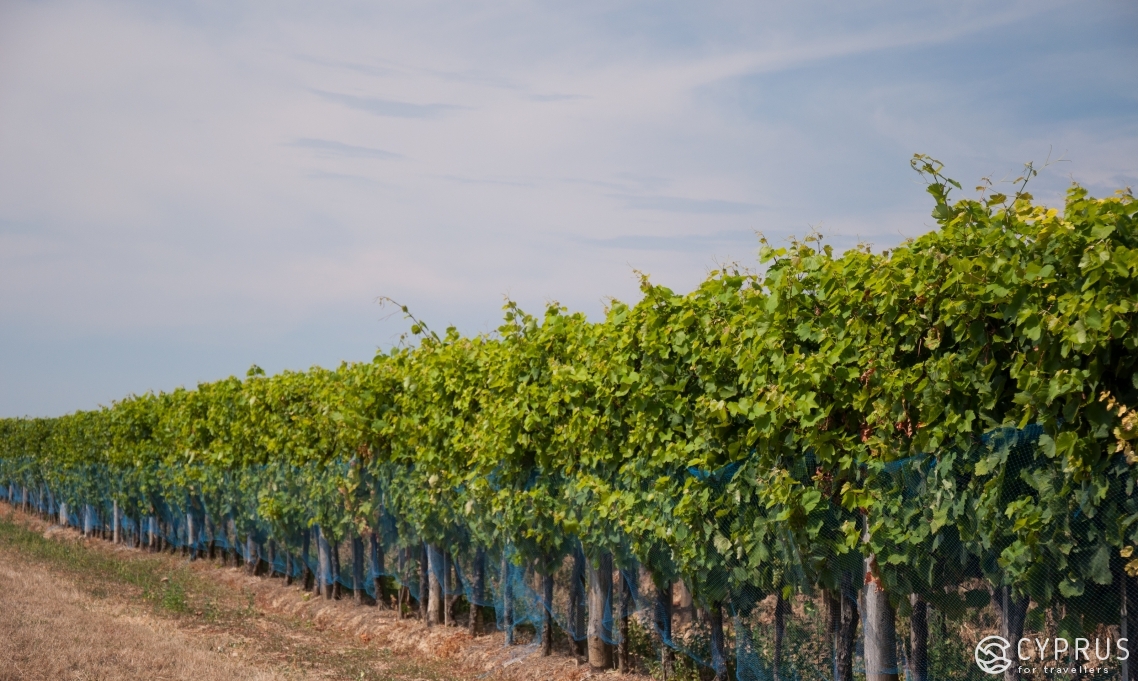
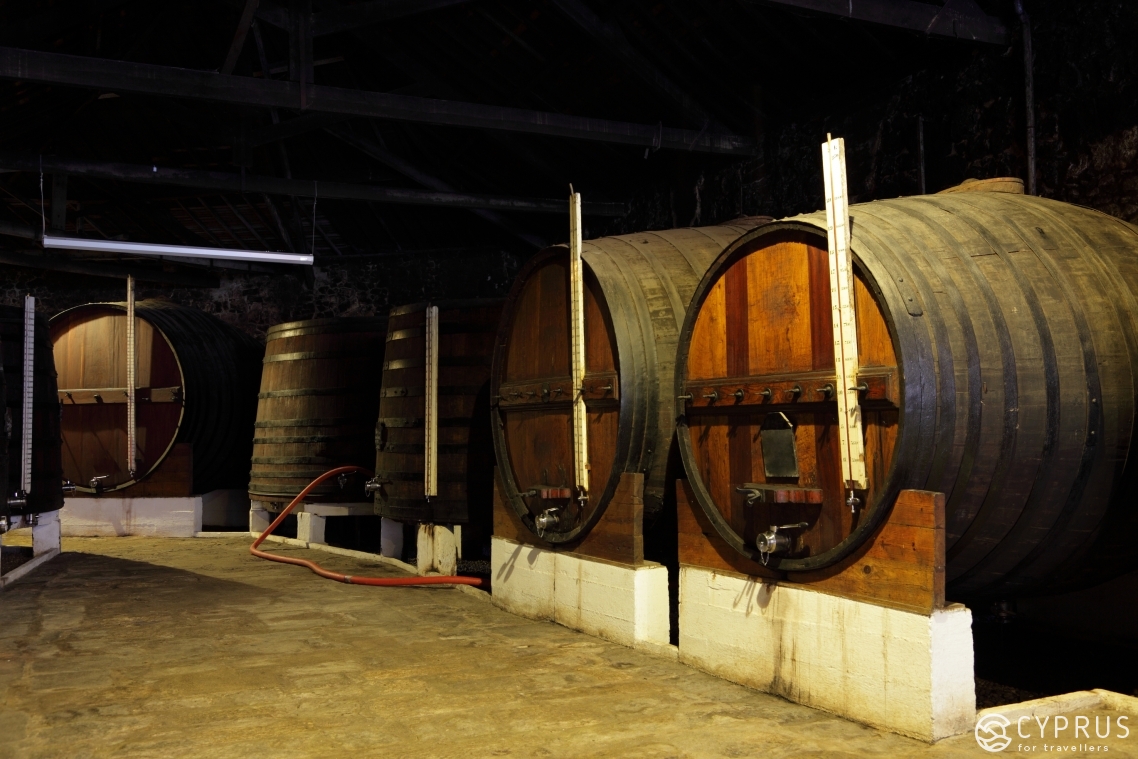
Agros village in Eastern Troodos is where Cyprys aromatic rose-water is produced, as well as liquor and brandy with rose petals. Here one can also buy high-quality meat: loukaniko, hiromeri, and other smoked products.
In Pedoulas village we recommend visiting the Byzantine Museum that features icons and holy relics from 13th-14th centuries. The Folkloric museum is located nearby. Here you can see household items from previous centuries, a very old hootch still, and weaving tools that were used to make silk clothing. Troodos climate is perfect for growing apples, cherries, and grapes, and the village is surrounded by orchards. Archangel Michael church (listed by UNESCO) is located in the village as well.
Another UNESCO church — the Panagia tou Moutoulla church — is located in the neighboring Moutoulla village. This old aisleless church is decorated inside with breath-taking wall-paintings created in the end of the 13th century. Traditional local folk craft in the village is production of wooden molds for bread baking.
Kalopanayiotis village is located on the left bank of the Setrachos river, in a scenic evergreen valley, among blossoming gardens. There is a water reservoir on the territory of the village where locals farm trouts. Other symbols of the village are two healing water springs, the Agios Ioannis Lambadistis Monastery, and the Byzantine icons museum. There are several hiking trails around the village as well.
If you find pleasure in spooky stories about ghosts, go to Prodromos village — you will like it there. The abandoned Berengaria hotel, which can be easily mistaken for a castle, is located here. The hotel used to be one the most popular and luxurious places on the island since the middle of the 20th century until it went broke in 1984. Today Prodromos visitors can observe the abandoned building, listen to creepy stories about it told by locals, and eat possibly the best apples in the region.
The Platres village is located on the Southern slope of the Olympus mountain 1200 meters above the sea level. This is where some of the hiking trails to Troodos waterfalls start. There is also a trout farm and a chocolate workshop in the village. Trooditissa Monastery where you can see the icon of the Virgin Mary created by Apostle Luca is situated nearby.
The Galata village in Solea valley is spread between two banks of the Klarios river. There are 6 churches in the village, and almost all the houses here are decorated with wooden storm-shutters, columns, stairs, and balconies. Galata Folks Art museum features traditional costumes, books, historical objects, and artwork created by local craftsmen.
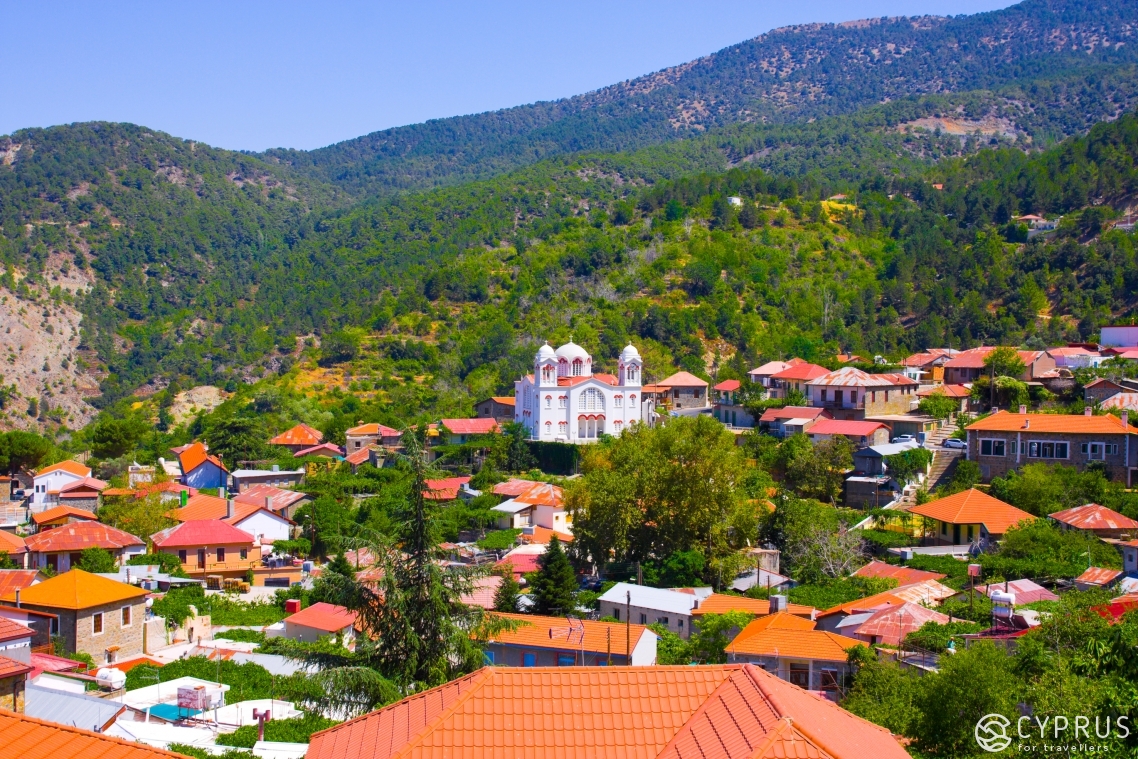
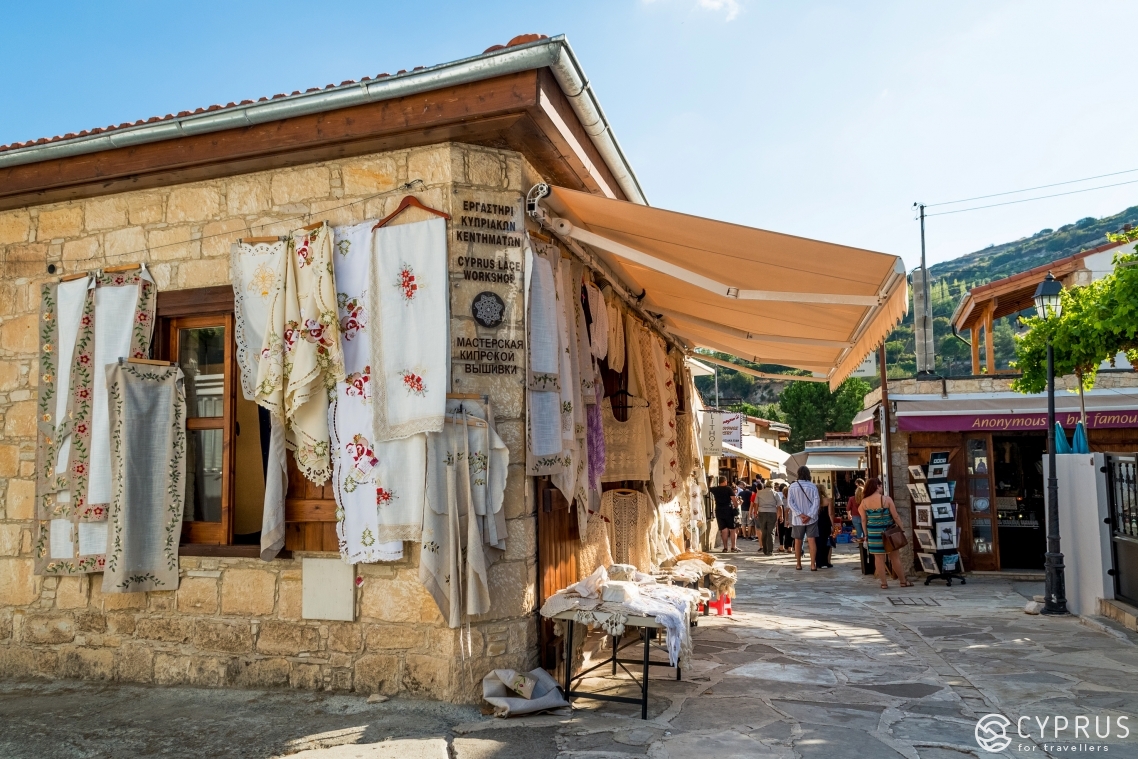
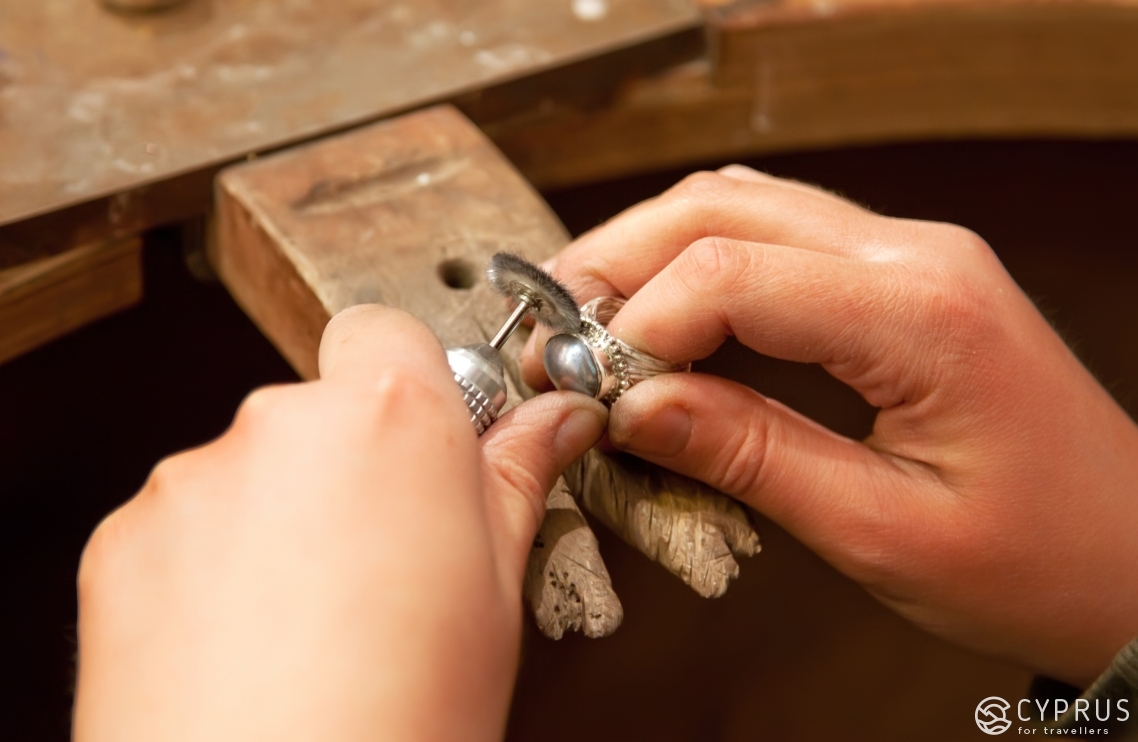
Lefkara is probably the most well-known village in whole Cyprus. Hundreds of tourists come here all year round to admire elegant «Lefkaritika» embroidery and filigree silverware. Paved streets, white travertine houses, lots of trees, and 18 churches, numerous cafes and restaurants, and friendliness of people who live here only add to the charmingness of this mountain village.
Olympus mountain skiing resort
Ski Cyprus is the only mountain skiing resort on the island. It is located on the slopes of Olympus mountain in Troodos and has four trails for beginners, amateurs, and professional skiers. Trails are 150 to 500 meters long, elevator service is provided. There is an equipment rental on the territory of the resort where one can find everything that children or adults might need. For an additional fee, one can hire an instructor. There are two hotels very close to the resort. Another lodging opportunity is an apartment and house rental in nearby villages. Be aware of winter snowfalls: roads to the resort may be temporarily closed. There is a webcam installed on one of the slopes which allows watching the weather online.

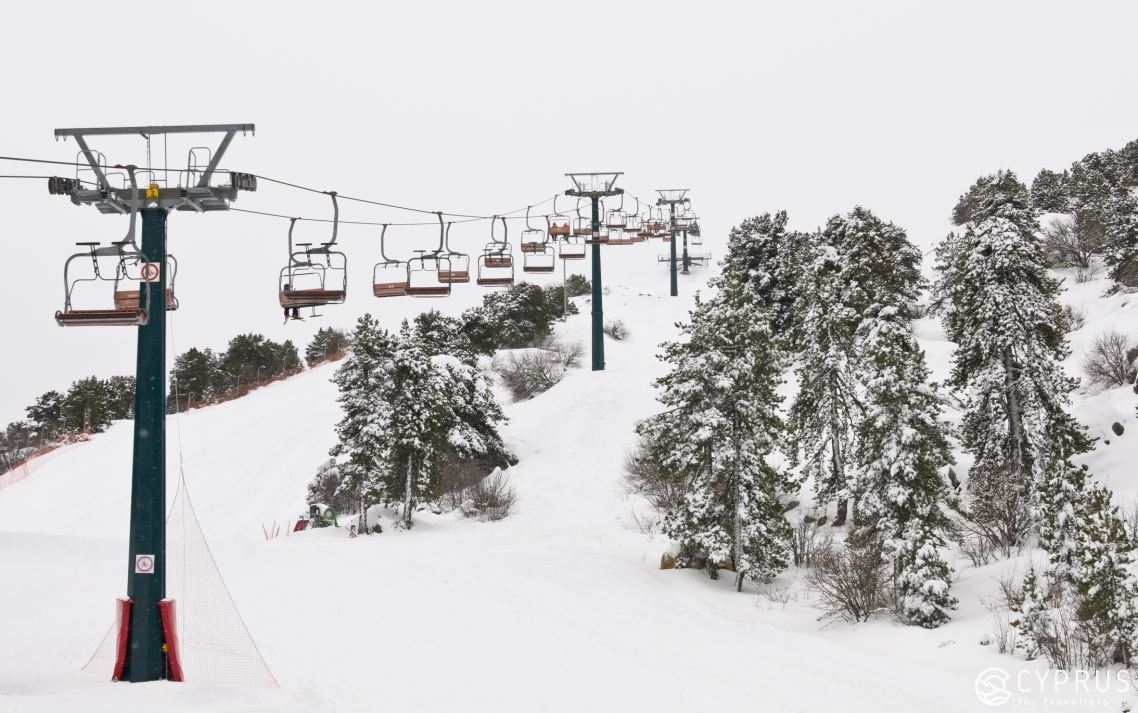
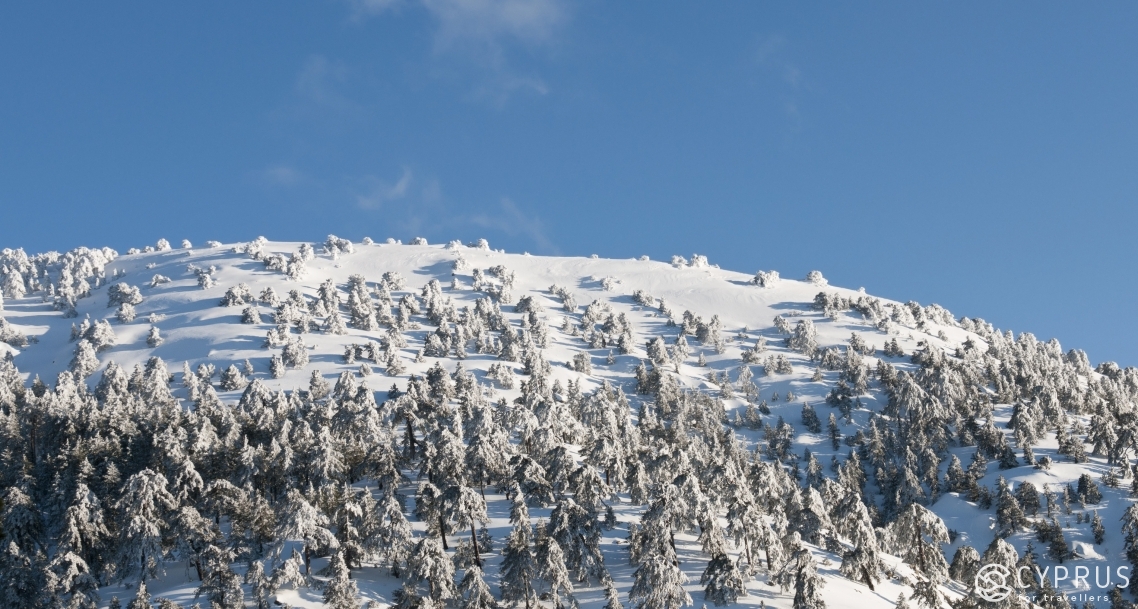
Troodos mountains monasteries
Kykkos Monastery is one of the most famous and the wealthiest monasteries on the island. It was founded in the end of the 11th century, during the times of Byzantine rule. Monastery buildings (including a church, a cathedral chamber, the deanery, cells, a library, and a museum) were built in different epochs and represent different architectural styles. The monastery is decorated with icons and wall-paintings that were created at the end of the 20th century by iconographers from Cyprus, Romania, and Greece. The most important relic of the Kykkos Monastery is the icon of the Virgin of Kykkos, which is almost never uncovered: people believe, that looking at the holy icon will blind them. Nevertheless, the icon is considered to have a great power, and lots of people come to Cyprus just to spend time near it.
Chrysorogiatissa Monastery is located about 40 kilometers from Paphos. It was founded in the beginning of the 12th century by a monk Ignatius, who happened to find a great relic — the icon of the Virgin of Chrysorogiatissa. There is a museum on the territory of the monastery: it features a collection of liturgical items, icons, and canonical dresses from 17th-20th centuries.
Trooditissa Monastery is located not far from Limassol, 10 kilometers from Platres village. According to the legend, it was founded in 1250 by two hermits, who were blessed to have been told where to built it by the Holy Mother herself. Visitors of the monastery can see the holy icon of the Virgin Mary of Troodos that is believed to be created by the famous Apostle Luca, and a leather belt encrusted with gold a silver — a cure from many diseases, as pilgrims say.
Machairas Monastery can be found in 40 kilometers from Nicosia, very close to the village of Lazanias in Troodos. There is a legend, that says that the icon of the Virgin Mary assigned to the Apostle Luka had been hidden in a cave not far from the place where today we see the monastery. Two hermits from Palestine, Neophytos and Ignatius, reached the cave and revealed the holy icon, and they had to use a machete to cut their way through thick plants and bushes. The icon and the monastery were named Machairas in reference to the Greek word meaning «machete» — Makhaira.
Timios Stavros Monastery (inactive today) is located in Omodos village, which we have mentioned above. It is, by all means, a very important part of Cyprus historical and cultural heritage. A small church was constructed in 210, while the monastery itself, as the most popular of several legends describing the early history of the monastery, has it, was founded in the 5th century by Queen Elena, who left here a piece of the True Cross on her way from Jerusalem.
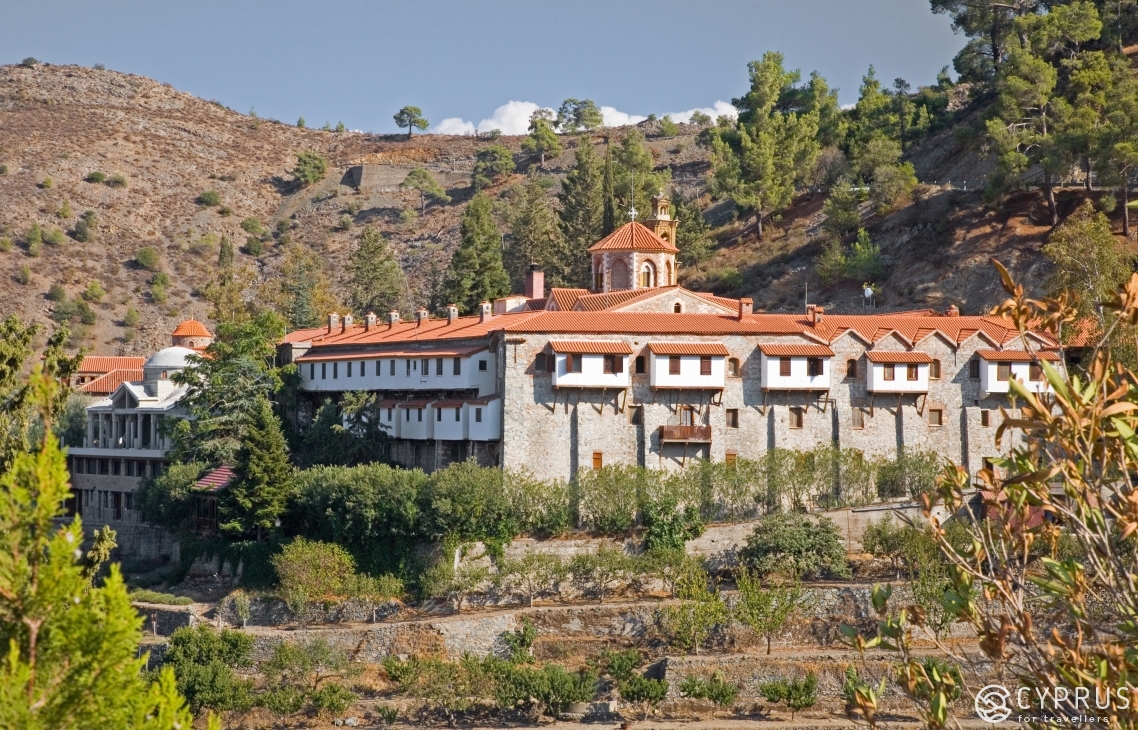
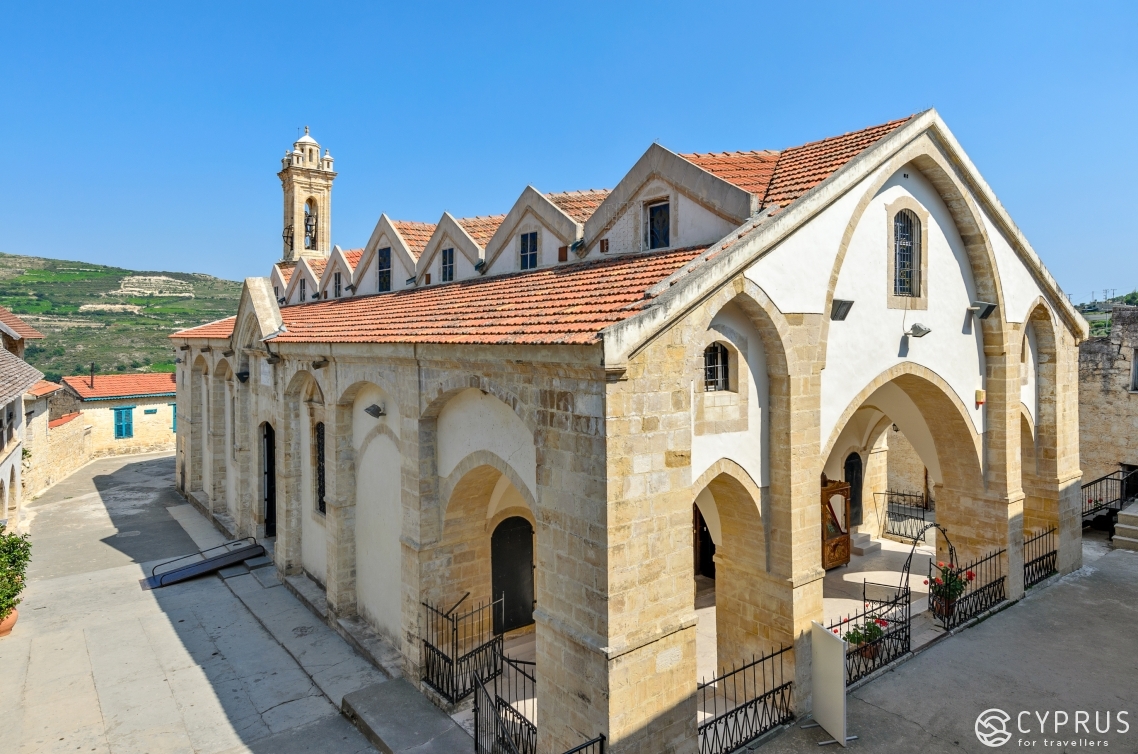
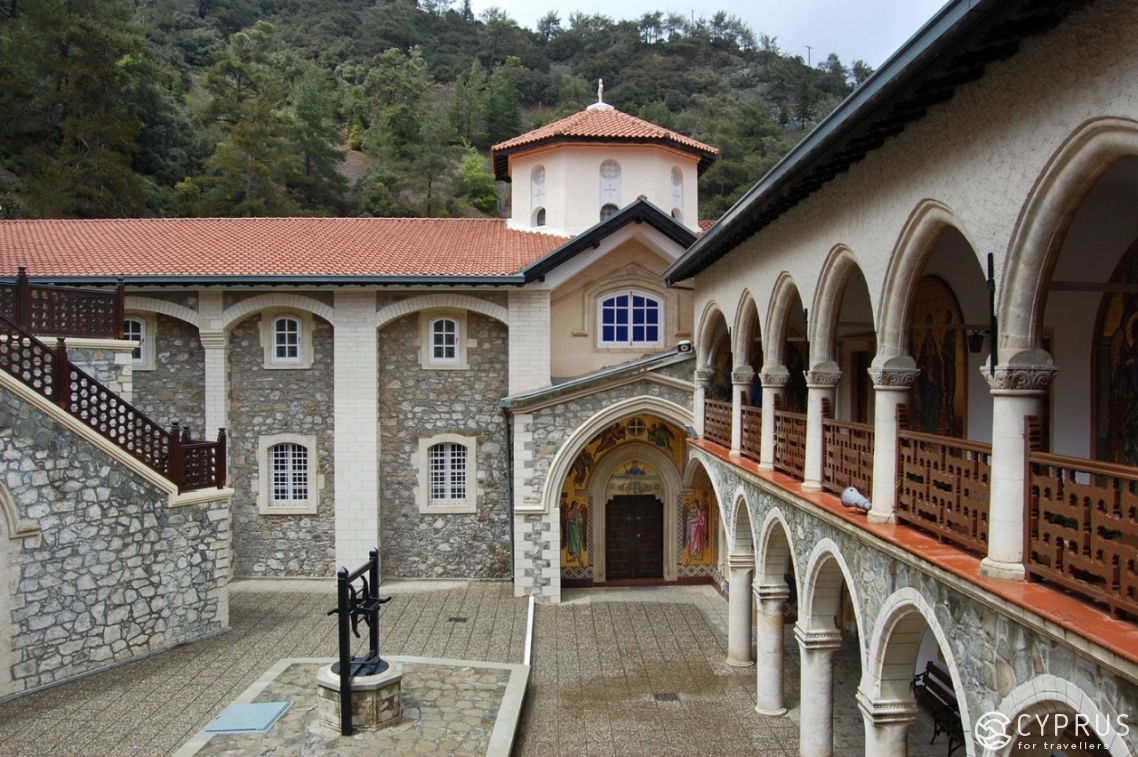
Panagia tou Kykkou Monastery is a nunnery high in Troodos mountains. It was built in the 12th century, the main relics are the holy icon of the Virgin Mary and an icon painted by Saint Seraphim of Sarov.
The National Park
The National Park of Troodos covers 45% of the mountain range. There are several dozens of hiking trails at the park, some as short as a little over a kilometer, and others as long as 10. Biking routes (that are longer) are also available.
Hiking is Troodos is great not only because of all the scenic views you get to enjoy, but also because it is a valuable and rare opportunity to explore endemic plants, come across endangered species of animals and birds, lifeless buildings left from the times of the Venetian rule, the Caledonia waterfall, and other local landmarks.
Cultural events, such as geologic exhibitions and seminars, are regularly held at the park. In a gift shop, one can find hand-made nature crafts, documentaries about Troodos, and lots of souvenirs.
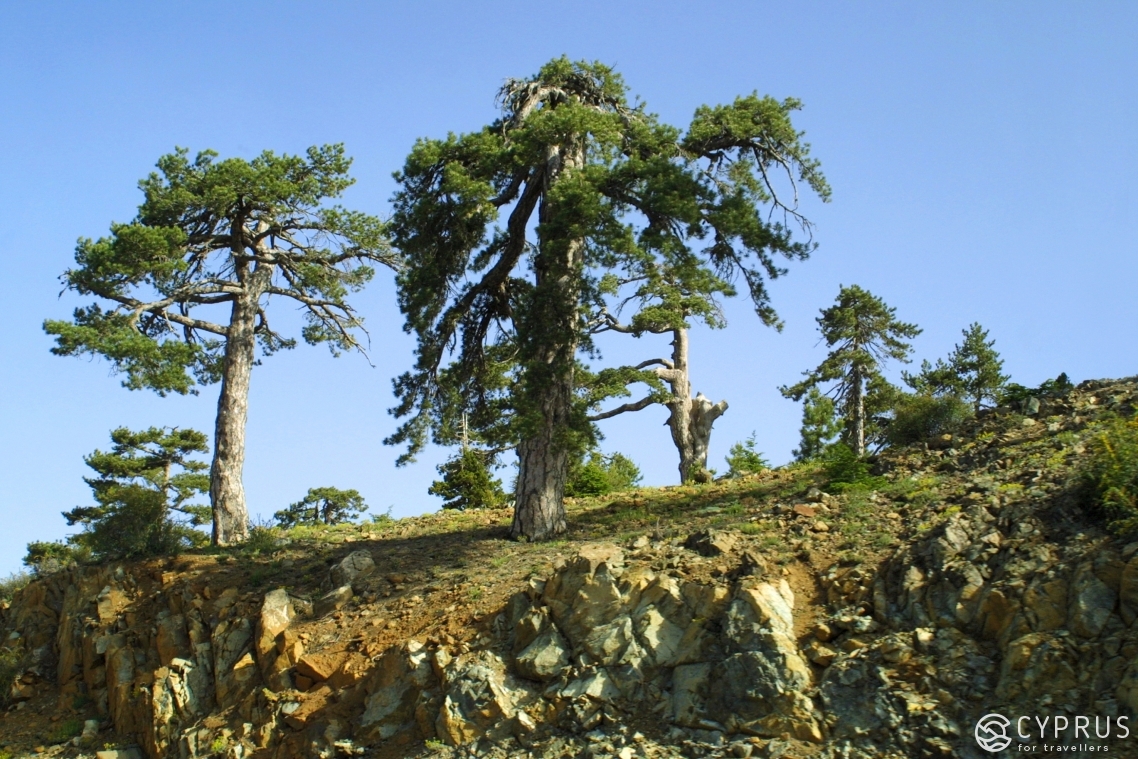
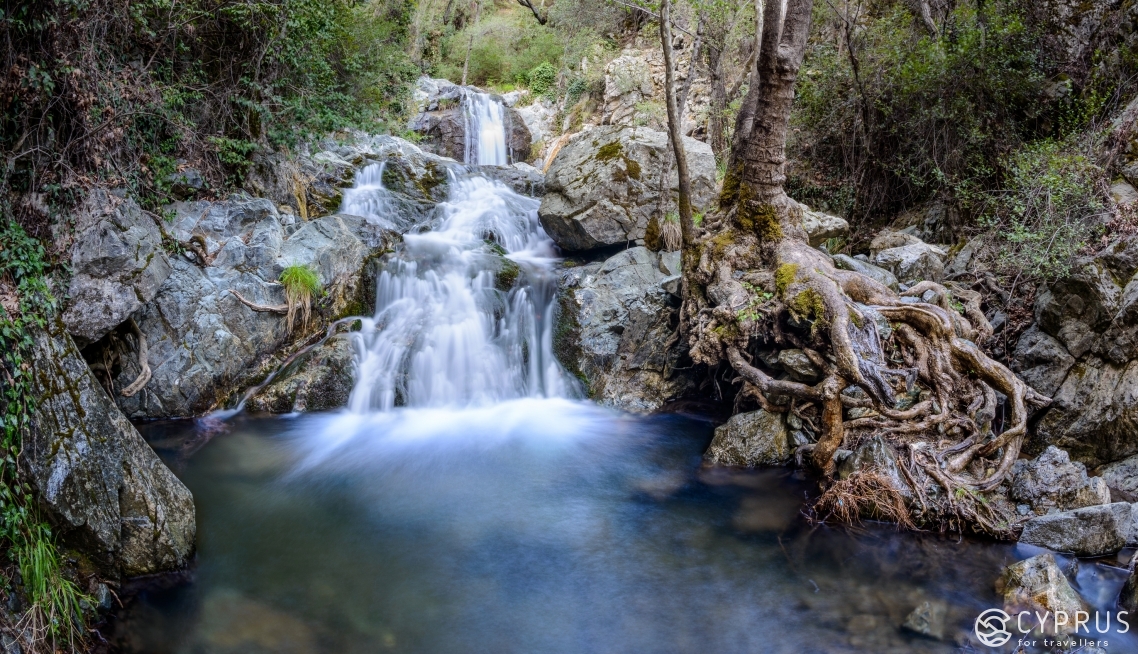
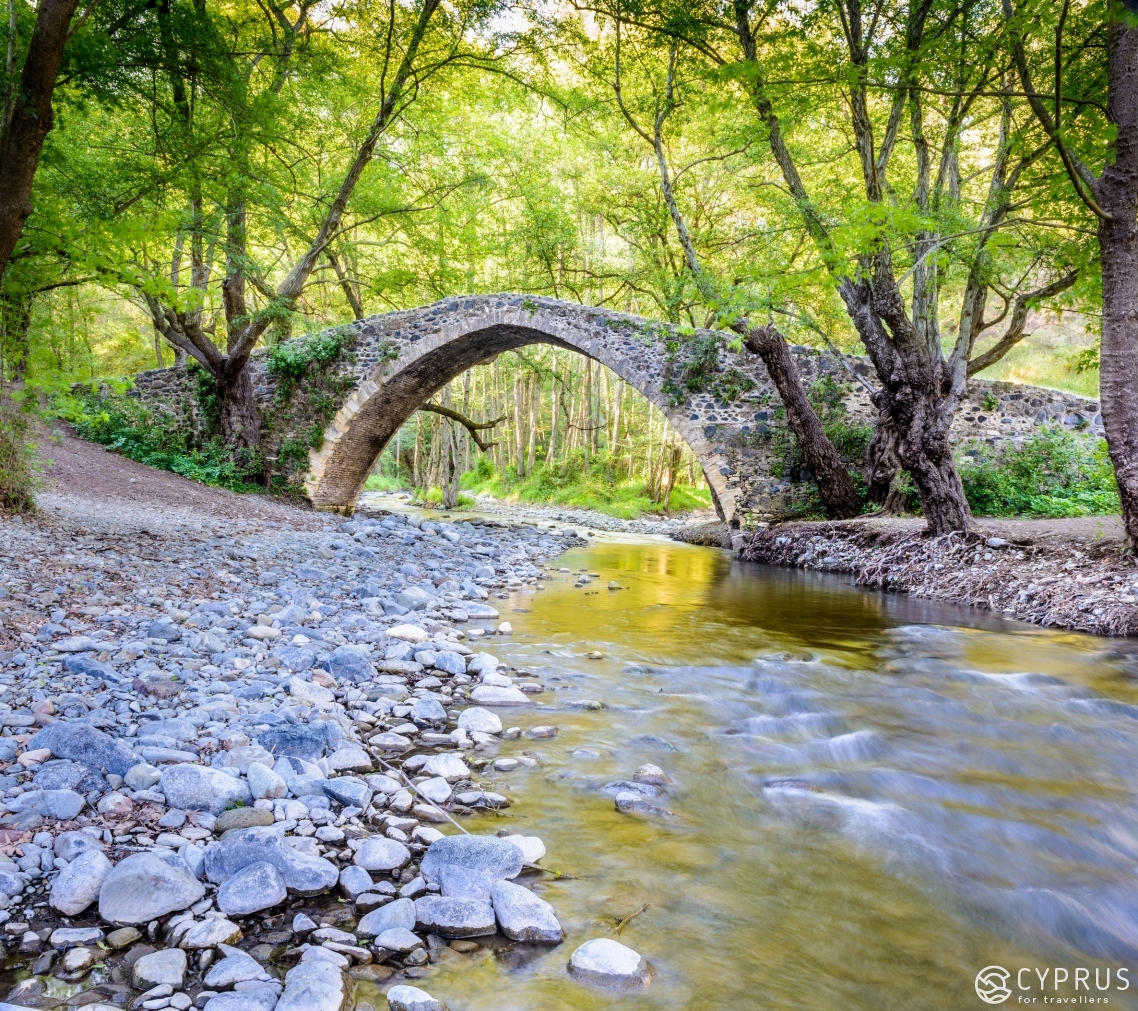
Ancient Byzantine churches in Troodos
Byzantine churches hidden in Troodos forests are definitely worth visiting: each of them is special in its own way, while all of them belong to the UNESCO world heritage list.
Agios Nikolaos tis Stegis Church in Kakopetria village is located on the west bank of the river Klarios. This is the only remaining building left from the monastery dated 11th century. The roof above the dome was added to the church in the 13th century to protect the building from winter storms. Inside one can find old wall-paintings (some of which date back to the 11th century), and early Byzantine paintings. The admission is free; the church is closed on Mondays.
Panagia tou Araka, the 12th-century church, is also protected from the weather by a special roof (just as all the «under the roof» churches we will talk about further). This one is 15 kilometers from Argos, in Lagoudera village. Step inside to admire early frescoes made by Theodoros Apsevdis, including a well-known dome image of the Christ Pantocrator. To enter the church, call a local priest for directions.
Panagia tis Asinou church can be found in about 3 kilometers from Nikitari village is eastern Troodos. This UNESCO heritage site is considered to be the only building left after the 11th-century monastery (which was originally located here) was abandoned. The walls are decorated with frescoes depicting canonical evangelic scenes and faces of Christian saints. The church is open for visitors from Monday to Saturday (9.30 – 16.00) and since 10.00 until 16.00 on Sundays and holidays. Admission is free.
Panagia Eleousa Church (16th century) is located in Galata village not far from Nicosia. The church was built during the times of the Venetian rule on the island. It has some fine examples of Italian-Byzantine religious art. To get inside, ask for a keeper’s contact information in a cafe in the main square of the village.
Panagia tou Moutoulla church is beautifully located in the middle of the Troodos mountain chain. As stated on the northern wall of the church, it was built in 1280 — which proves it to be one of the earliest churches on the island. Wall-paintings have some elements of Byzantine tradition, as well as signs of Western and Eastern crusader nations influence. Ask locals for a keeper to get inside the church.
The Church of Archangelos Michael in Pedoulas village was built in 1474. The author of the frescoes — Minas — created scenes from the Old and the New Testaments, and the image of the Archangel Michael himself. The church is open for visitors, admission is free.
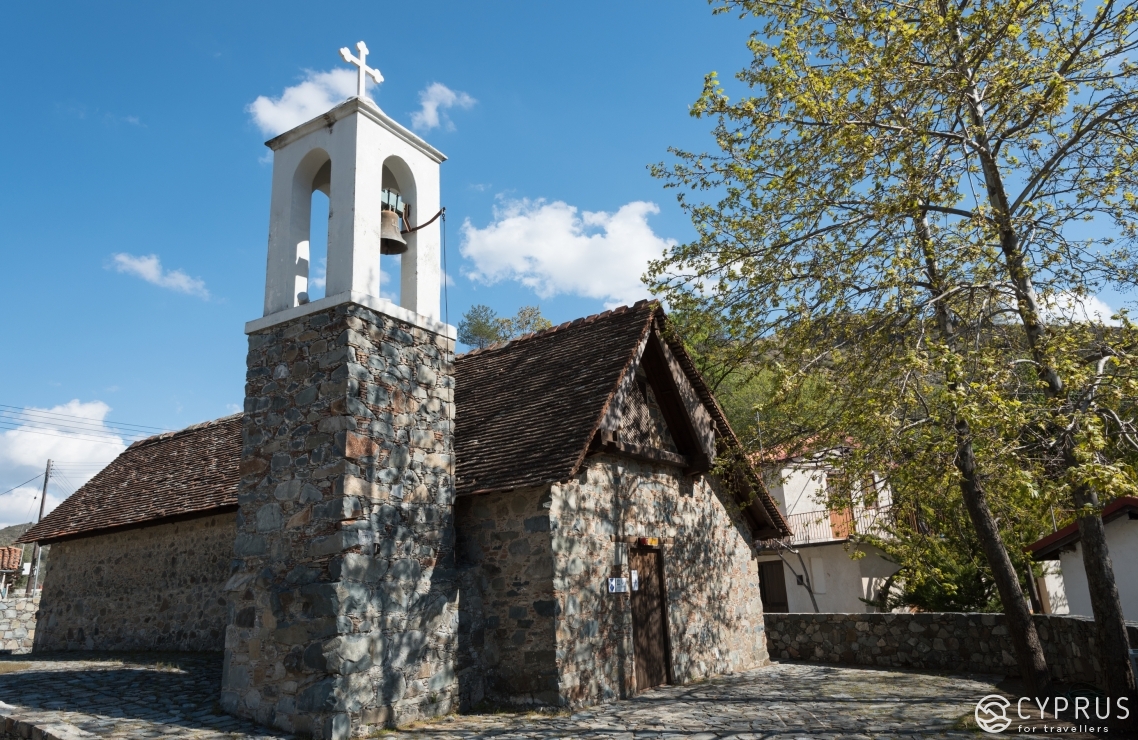
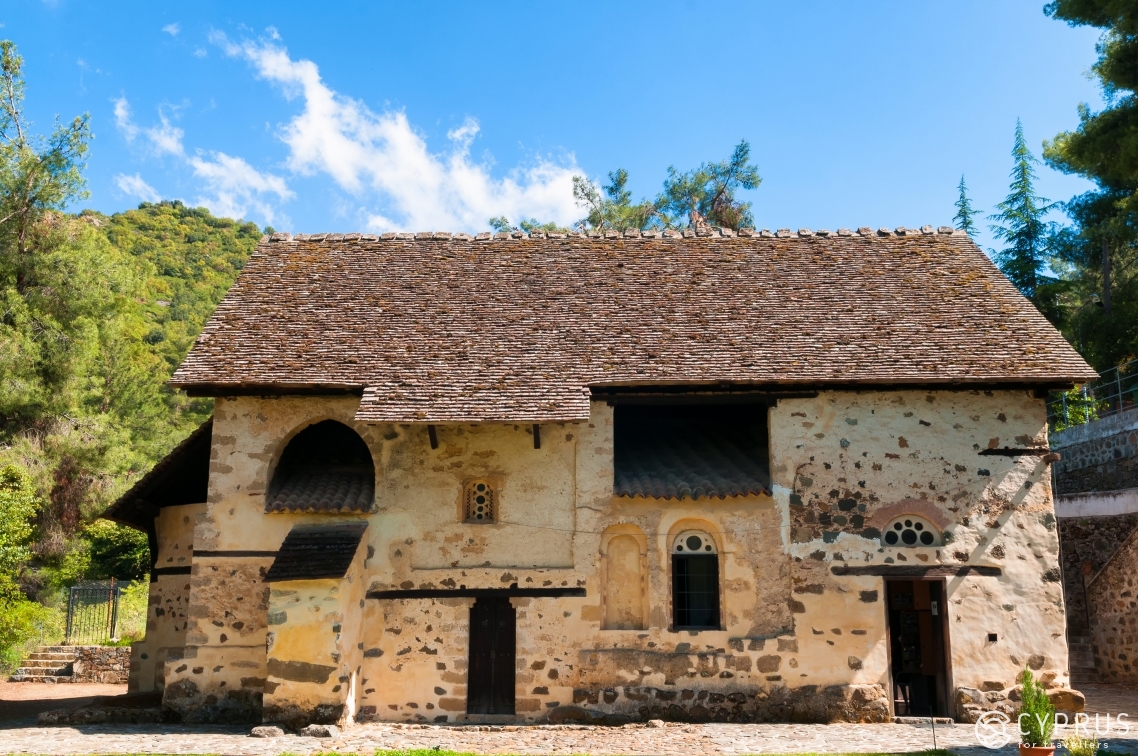
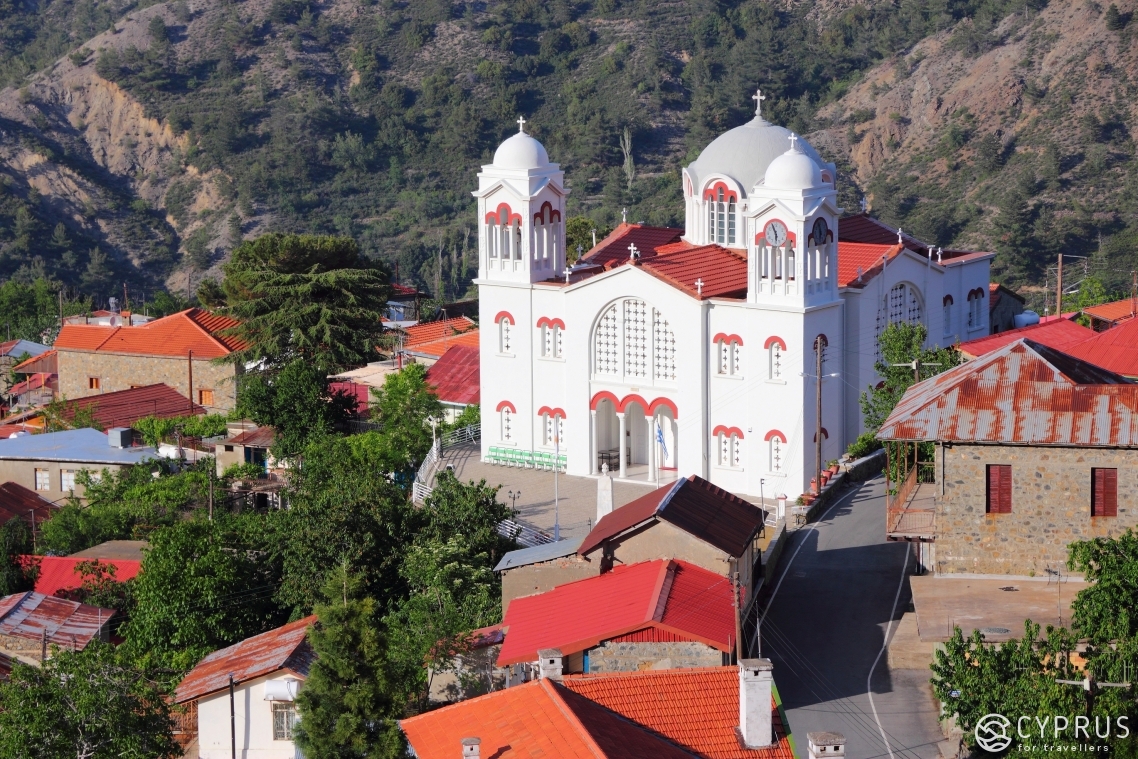
Church of Timios Stavros (Holy Cross) tou Agiasmati is 5 kilometers from the Platanistasa village in the eastern part of Troodos. Its wall-paintings are a perfect mixture of Byzantine and local naive art with some elements of Italian Renaissance. If you find the church closed, ask for a key keeper in the village.
Timios Stavrou (Holy Cross) in Pelendri village is located close to Limassol. Here you can see such frescoes as «The Presentation of the Blessed Virgin Mary», «a marriage ceremony between Mary and Joseph», «the Dormition of the Mother of God», «Foot washing», and many others. Admission is free; if doors are closed, the keeper of the keys must be somewhere in the village.
Transfiguration of the Saviour Church in Palaichori village was built in the 16th century. The wall-paintings inside are dedicated to the life of Christ and the scenes from the Old and New Testaments. The church is open to visitors on Tuesdays and Wednesdays since 10.00 until 13.00; you can also book a tour in advance.
Agios Ioannis Lambadistis Monastery is one more UNESCO heritage site in Troodos mountains, to the east of Kalopanayiotis village. It was founded in the 11th century and it was first dedicated to Saint Irakleidios. A century later it was renamed after Saint Lambadistis, who died at the age of 22 surrounded by the fame of a wonders-worker. Admission is free: since 8.00 until 16.00 with a lunch break between 13.00 and 14.00 (Tuesday – Saturday), and since 10.00 until 16.00 with a lunch break between 13.00 and 14.00 on Sundays.
Safari tours in Troodos
Extreme and unusual sports lovers! Remember that you can explore most of what Troodos has to offer to subscribe for a quad safari. Tours can be 3,5 hours, 8 hours, and 2 days long and include mud-locked roads, scenic villages, and other sites. Meals are included in the price.
